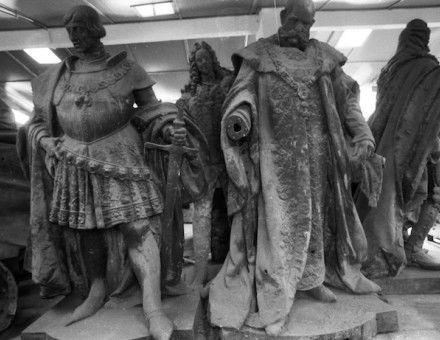Arab Conquests and Sasanian Iran
Iran, despite its conquest by the armies of Islam, retained its own Persian language and much of its culture. Khodadad Rezakhani examines the process by which a Zoroastrian empire became part of the Islamic world.
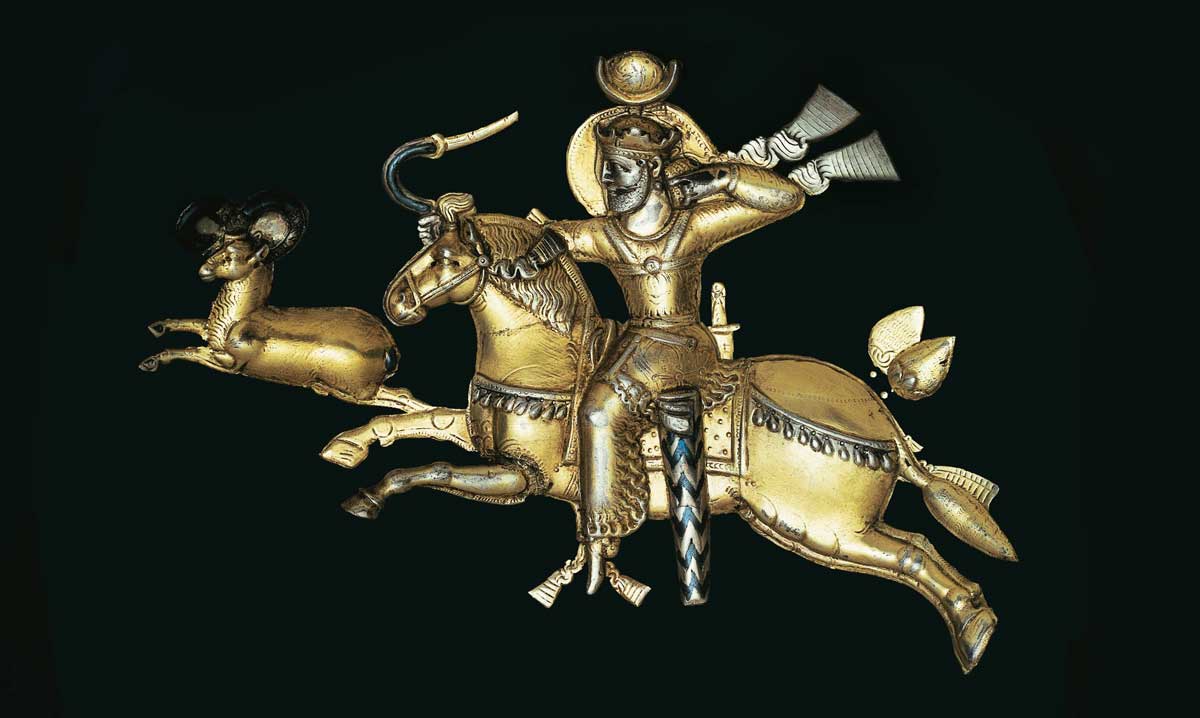
The Sasanian Empire, which ruled the vast region between the Oxus and Euphrates rivers from AD 223 to 651, was perhaps the most influential of all ancient Iranian empires. Neighbouring Rome in the west, the Chinese empire in the east and in direct relations with the nomadic states of the Eurasian steppe, it was called one of the ‘Two Eyes of the World’. Its territories included ancient centres of civilisation, such as Sumer, Babylon, Elam and Persia. An empire that stopped Roman advancements in the Near East, controlled the Caucasus passage and secured and subdued Central Asia, it was also a centre of culture, from its magnificent architecture to metal and glassworks and fine textiles, whose heritage was apparent in both the medieval European world and within the Islamic civilisation that came to dominate its territories.
In religion and learning, too, the culture of Middle Persian literature provided the backbone of the medieval Persianate culture that came to supremacy in the area between India and the Balkans. Zoroastrianism, an ancient religion that influenced both Christianity and Judaism, as well as Manichaeism, the gnostic religion which was at one point the faith of Augustine, originated and flourished in the Sasanian domains. So how did the Arabs, who expanded from the depths of Arabia deserta in the seventh century, overrun the Sasanian Empire, convert its population to Islam, take control of its resources and transform its culture and language? Some historians attribute it to the simplicity and clarity that comes with a monotheistic religion such as Islam. Another camp, more hostile to Islam and nostalgic for what they perceive as Iran’s days of glory, attribute Sasanian collapse to the arrival of uncouth nomads who destroyed a glorious civilisation. Conventional wisdom says that the disastrous mismanagement and unpopularity of the Zoroastrian theocracy of the late Sasanian period gave victory to the invading Arabs, who met little resistance from a disgruntled populace.
Both narratives, which are based mainly on the standard Islamic histories of contemporary chroniclers, such as the Baghdad-based Baladhuri and the historian al-Tabari, consider the fall of the Sasanians to be the result of military campaigns by the Arab armies. But the fall of the Sasanian Empire is still recalled as a national failure, the beginning of the subordination of Iran to Islam and the Arabs. This is despite the fact that the Sasanian Iranshahr (the ‘Domain of the Iranians’) cannot really be equated with the modern state of Iran.
Other than the swiftness and effectiveness of the Islamic conquests, there are two cultural assumptions routinely made by scholars. The first is that the Islamic conquests meant that Islam as a religion was either accepted – or imposed – on the entire Sasanian population. Any survival of pre-Islamic religions, generally understood as Zoroastrianism, is considered an act of resistance and defiance requiring gargantuan effort. It is thus assumed to have been heavily suppressed by the new ‘masters’, the Arab Muslims. The second assumption is that the Arabic language was imposed immediately on the conquered populace as part of the process of Islamisation. Consequently, the survival of Persian is considered a miraculous event, a unique phenomenon in the Islamic world in which everyone else adopted Arabic. This miracle is either ascribed to the resistant nature of Iranians or credited to the epic poet Ferdowsi, who, against all odds, composed the Shahnameh (the Book of Kings) between 977 and 1010 with the conscious aim of preserving the Persian language and Iranian culture. Both of these claims appear to be thin and unfounded.
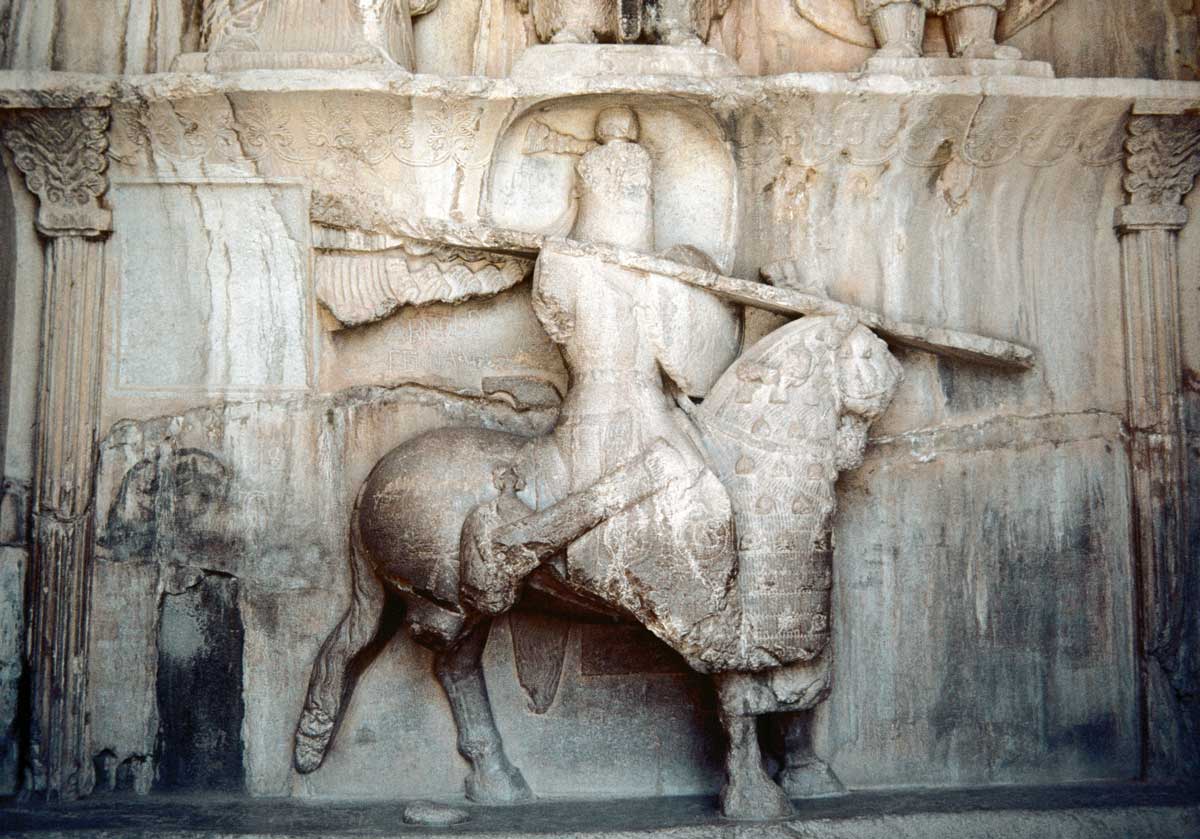
The end of the Sasanian Empire and the rise of Islam took place in a changing world, the period historians now call ‘Late Antiquity’. That term was introduced to the English language in the late 1960s as a corrective to Edward Gibbon’s narrative of the fall of Rome and the ascent of the ‘Dark Ages’ following the transformation of Classical Rome into Christian Byzantium. The late antique framework argues that Christianity replaced many of the institutions of the Classical world and adopted them in to a system that went beyond the structure of an empire. It turned the Roman Empire into a Christian commonwealth. The concept of Late Antiquity created several themes and methodologies that historians of both Sasanian Iran and of Islam have adopted to argue for a similarly changing world in West and Central Asia. One consequence of this has been a tendency not to see the Islamic conquests as a rupture, but rather as the result of changes that were taking place throughout the period of Late Antiquity and that continued to shape West Asia for centuries.
This was a changing world. The Late Antique period saw the rise of the ‘holy man’ (local saints or spiritual figures, who came to dominate the social landscape in late antiquity), which can also be considered within the context of changing social structures all around Eurasia and North Africa. Similarly, economic changes in West Asia, particularly in agriculture, should be understood within the context of changing political attitudes in Central Asia.
The study of late Sasanian Iran, essentially the period after AD 484, is a prime opportunity to explore this period of change. The date is significant as the year in which the Sasanian emperor, Peroz I, was defeated and killed by the Hephthalites somewhere near Balkh, in what is now northern Afghanistan. The Hephthalites, a confederation of peoples from Central Asia, became masters of East Iran and imposed reparations on the Sasanians. For almost two decades they became kingmakers, removing and installing claimants to the Sasanian throne. The payments of war damages to the Hephthalites must have drained the Sasanian treasury, although no direct evidence of this exists. It certainly did, however, turn the Sasanians into predatory actors in Syria, the eastern territories of the Romans, which the Sasanian king Kavad (r.488-531), the winner of two decades of royal musical chairs, invaded and from which he tried to extract as much cash as possible.
Financial troubles aside, the defeat and death of Peroz left the Sasanian court in disarray and its nobility devastated. The reparations demanded by the Hephthalites were almost certainly paid not only from the treasury of the king, but also from the coffers of the nobility and the pockets of the common people. The loss of Sasanian prestige made it hard for the nobility to keep a straight face when addressing the puppet kings that followed Peroz, such as Walash and Jamasp, as the ‘King of Kings’, a situation true even of Kavad himself in the early years of his reign. This lack of trust in the institution of kingship resulted in a rebellion, the exact nature of which is unclear. Some historians see this as the first stage in the so-called revolt of Mazdak. This was supposedly a socio-religious reform movement, led by a reforming Zoroastrian priest and initially supported by Kavad himself, aiming to upset the social order prescribed by the Zoroastrian clergy. However, the evidence seems to suggest a different motivation. It seems as if the dissatisfaction of the nobility forced Kavad to make some hasty changes to his administration and court, which proved unpopular. Around AD 496 this led to his removal from the throne by a coalition of nobles and priests and resulted in Kavad’s retreat to the court of the Hephthalites. His restoration, two years later in 498, backed by a Hephthalite army, meant not just a coup against the nobility that had removed him, but also the beginning of a new regime, which must have gained the partial agreement of some noblemen, since it was shortly after the restoration that Kavad and his nobles set out together on their conquest of Syria.
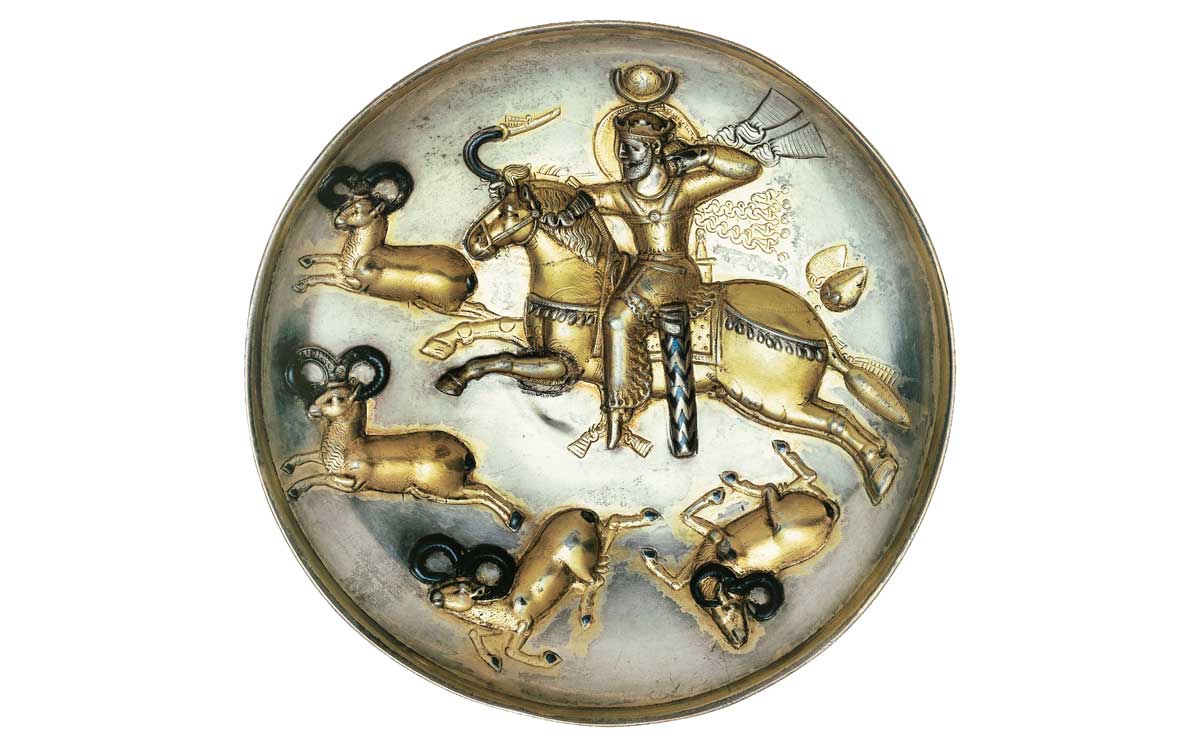
The Syrian campaign spanned the remainder of Kavad’s reign and some of that of his son, Khosrow I Anusherwan (r.531-79). Kavad, however, had just enough time to rejuvenate his new administration by instituting reforms, which included a revision of the land tax system (kharag) and the introduction of a poll tax. He may also have purged the nobility and reorganised the military, dividing the empire into four parts in order to make its defence more efficient. Kavad and Khosrow’s reforms took place at the same time that the Emperor Justinian was re-establishing and reforming his rule in Byzantium and the two empires engaged in heavy fighting on their borders. The Hephthalites became gradually less influential at the Sasanian court, although they remained a powerful presence in East Iran.
Kavad’s reign ended with the full blown Mazdakite revolt, which was brutally oppressed by Khosrow I, making him the hero of contemporary Zoroastrian texts: the Mazdakite revolt is only recorded in sources hostile to it. Its call for the sharing of property and women give it a socialist overtone, which was exploited by Marxist historians and scholars in the former Soviet Union. What we do know is that it was just one facet of a larger religious and social movement. Later versions of the movement, appearing in the Islamic period under the general name of Khurramdiniya (‘pleasurable religion’), suggest that it might be prudent to consider the movement within the development, typical of Late Antiquity, of universal religions, which appealed beyond specific populations, political entities or cultures. Like the Christian commonwealth, the Khurramdiniya and Mazdakite religious milieu may have been in the process of creating a socio-religious and, eventually, political commonwealth.
Zoroastrianism shows less interest in playing such a role. The existence of a Zoroastrian theocracy, presided over by a dominant priestly establishment, is based on fragments of evidence, some of which date back hundreds of years to around the sixth and seventh centuries. Apart from the absence of any ‘orthodox’ Zoroastrian doctrine in the Sasanian world, we have no evidence of the presence of a dominant clergy. Late Sasanian kings are known for making public overtures to their native Christian communities. Khosrow II Aparviz (r.591-628), the quintessential late-Sasanian king, married one, perhaps two, Christian wives and had a Christian chief minister. Likewise, in the course of mustering support for his campaigns against Byzantium, he supported the Nestorian Christian community within his domains, buttressed the Nestorians of Syria and, upon conquering and entering Jerusalem, moved the True Cross from Jerusalem to Khuzistan in south-west Iran in order to provide prestige for the Christians of his empire. The presence of a dominant Zoroastrian religious structure is unlikely to have allowed such relations with members of another religion.
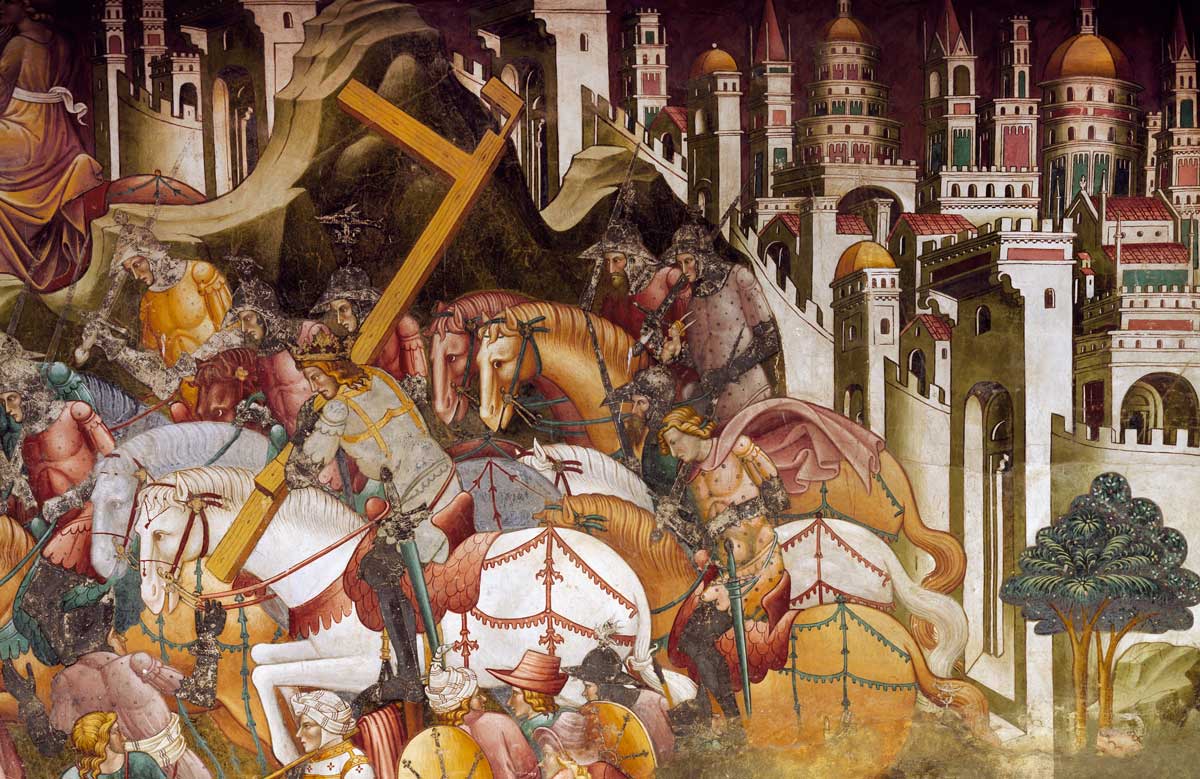
Christians, in fact, were the dominant population in the western regions of the Sasanian realm at this time. Mesopotamia, the heart of the Sasanian Empire (dil-i Eranshahr), was populated mainly by Aramaic-speaking Christians and Jews. South-west Mesopotamia was the realm of the Arab kingdom of Hira, the land of the Lakhmids, who ruled the Arab tribes of northern Arabia on behalf of the Sasanians. Eastern Arabia was also populated by Arabic-speaking peoples, who were controlled via the Sasanian administration of Bahrayn, which included all of eastern Arabia down to what is now Oman. Southern Arabia, the former kingdom of Himyar, had become part of the Sasanian Empire following its conquest around 570.
Khosrow II invaded Syria in 602 and defeated the Byzantine armies there. Soon, all of Syria, Palestine and most of Anatolia had fallen into Sasanian hands. By 615, Egypt was also a Sasanian territory. For more than two decades, Sasanians were masters of West Asia and, by defeating the Hephthalites with the help of the western Turks in the 560s, were also in secure control of much of their lost territories in East Iran.
It was in this environment that Islam arose as a political and religious movement in Arabia deserta. Islamic beliefs were strongly influenced by non-Orthodox Syriac and other Christian cults in the Syro-Mesopotamian region. The Arabs of Mecca were aware of conflicts in Yemen between the Sasanians and the Axumites, an empire ruling over Ethiopia. They also knew about the Byzantines’ withdrawal from Syria and Egypt. Muhammad, as the leader of the Islamic community, himself fits with the rise of the Holy Man in Late Antiquity. He was not, by any means, the only Arabian prophet preaching various versions of a ‘pure’ Abrahamic religion, one untainted by Rabbinic Judaism or Christianity. Most prophets at the time were also inspired by various movements within Judaism, mixed with puritanical movements and gnostic cults that were common in West Asia. The recurring theme of the prophet-holy man disappearing into the desert for contemplation is reflected in the life of the original Christian monk, St Anthony the Great, who had roamed the Egyptian desert several centuries earlier.
Arab prophets, mentioned in the Islamic texts, were a common feature of the region and a point of focus for social movements that wanted to break the geographical and political stranglehold of the Sasanian conflict with the Axumites and the Byzantines. Used to open trade with Roman Syria and easy access to the Red Sea and Indian Ocean trade, the Sasanian hegemony was stifling the ability of these Arab traders to act. The Sasanians controlled Najran, the border town of Yemen, which was the main point of contact for the people of Mecca and Yathrib (later Medina) with the riches of Himyarite Yemen. With the disappearance of the Himyar kingdom in the early sixth century, the internal conflicts in Yemen and the interruption of Syrian trade by war, the relative prosperity of the Bedouins and their trade city of Mecca was also gone. Sasanians, in control of Jeddah and having interrupted Byzantine-Axumite contacts, may have even tried to impose a ruler on Mecca, although the task proved beyond them. It is no surprise that the first foreign relations overture of the new community of Muslims was with the Axumite king, the Negus (the Najjashi of the Islamic sources): they were looking for a new ally.
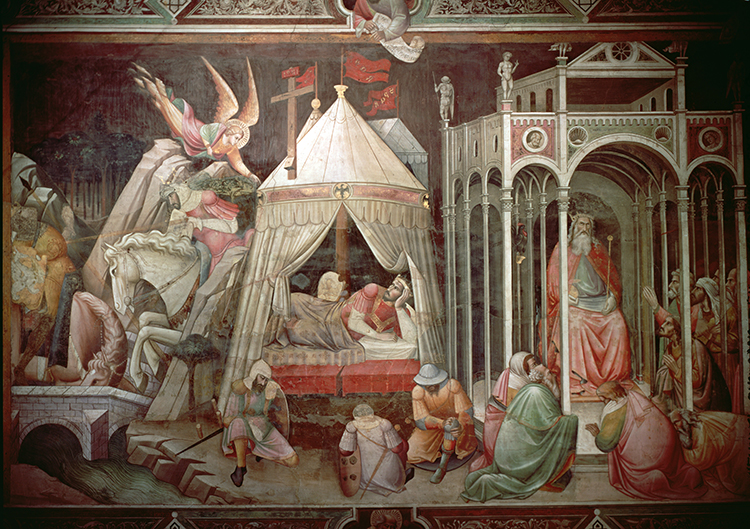
The Sasanian Empire was over-extending itself. The cost of the war with Byzantium was mounting and the administrative task of managing the new territories was something that the court was unable to cope with. At the same time, a recent economic boom caused by agricultural reform had funded the war and expansion. Kavad and Khosrow I had allowed small landowners to switch production to cash crops, such as cotton or sugar cane, and less labour-intensive horticultural activities, which led to an increase in wealth. Acquisition of land, as well as the utilisation of marginal land for production, was a notable feature of the late Sasanian economy. The economic boom helped to set off the poverty caused by the Hephthalite reparations generations earlier. The Sasanian administration, which was used to a much slower rate of growth, was ill equipped to deal with the unprecedented expansion of capital, land and labour. The Sasanian bureaucracy was unable to control its own empire, which had outgrown its administration.
One consequence of economic growth was the need to absorb land and labour from beyond the borders of the empire. The regular practice of invading Syria and moving large parts of its population to the Sasanian realm, favoured by kings from Shapur II to Khosrow from the third to the seventh century, was no longer efficient. Syria, a natural continuation of Mesopotamia, needed to be formally united with the latter and Khosrow II tried to achieve just that.
The successful campaigns of the Byzantine emperor Heraclius resulted in the defeat of Khosrow II in 628. The Sasanian king of kings was removed by his son, Kavad, and the nobility, and was put on trial. In reality, the Sasanian dynasty ended with the execution of Khosrow II in 628, perhaps one of the least studied regicides in history. The reigns of his successors, Kavad II and his son, Ardashir III, lasted less than two years.
The victory of Heraclius had few immediate consequences. Byzantium recovered Anatolia and took nominal control of Syria and Egypt, too. But by 636, a mere eight years after the demise of Khosrow II, Byzantine forces were defeated in Yarmuk, near the modern borders of Israel-Syria-Jordan, by the advancing Muslim army. The Battle of Qadissiya in south-west Mesopotamia followed the same year. Both were small battles, glorified by later historians, but were the first successful steps in the long march of the Muslim armies.
The local populations had become fed up with the violence that had long been inflicted on the region by Byzantines and Sasanians and were more welcoming to armies, such as those of Islam, which at least offered to accept payment as an alternative to the violent conquest of cities such as Hira, which capitulated peacefully. Others, garrisoned by imperial troops, had to fight, but eventually became part of the new system. From an economic point of view, Syria and Mesopotamia were finally united and they remained so for centuries to come. In the Arabs, the region had finally found an administrator up to the task of governing it.
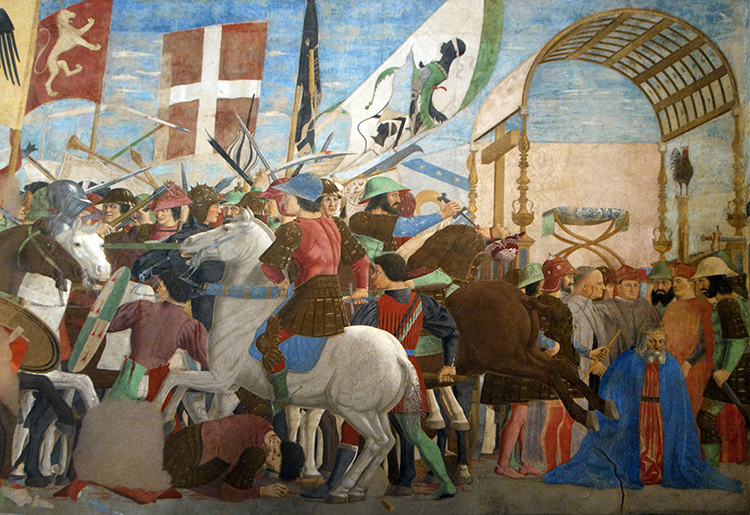
The newcomers brought their religion, which closely resembled the local Christian, Jewish and Gnostic beliefs. Early Muslims probably sounded much like any other Christian-Jewish cult, which is how they appear in the Syriac and Armenian texts. There is little reference to Islam in the few contemporary sources and their caliphs and Amir-ul-mu’minin (Commander of the Faithful) appear to the Armenians and the Syriac Christians as simply ‘Kings of the Arabs’. But whatever their early promise might have been, when faced with the considerable riches of Mesopotamia and Syria, the greed of the newcomers resulted in resistance. Local dihgans, the landowning gentry of the Sasanians, went to great lengths in order to prevent the Arabs from taking over their lands. They were successful, because where we find Arabs – mainly those connected to the Umayyad dynasty – they are trying to reclaim the marginal land in the deserts or marshlands of southern Mesopotamia and Khuzistan. The economic flourishing of late antique Syro-Mesopotamia liked the new administration’s bureaucracy, but had less time for those who arrived to enforce it.
The new Muslim administration understood that Arabia deserta was not a suitable place from which to run a state. They soon moved to their new territories, initially setting up camp in Kufa, just outside the walls of Hira, then moved on to Damascus. The garrison towns of Basra and Kufa, housing many newcomers as well as the local populace, wanting access to the power offered by the new administration, had to be fed from far-off places. The administrative coffers of Kufa were replenished by the taxes of Dinawar, in the extreme west of the Iranian Plateau. Basra’s costs were deferred to Nihawand, next door to Dinawar.
The new administration relied on the old, established, system set up by Kavad and Khosrow I. It even issued coins inscribed in Middle Persian. The same course of action was taken in Syria. After the initial phase of conquest and on securing the eastern borders of Mesopotamia against the Sasanian Yazdgerd III, the conquerors settled down.
The last, much diminished, king of kings, Yazdgerd III, defeated by the Muslims in 639, had to abandon the Sasanian capital of Ctesiphon, near Baghdad. From a junior branch of the Sasanians, Yazdgerd only took the title King of Kings after all the close relatives of Khosrow II had been either killed or executed. He appears to have lived in the old homeland of the Sasanians in the south of the Iranian plateau. He withdrew there following the conquest of Mesopotamia, appealing for assistance from his subjects. He recruited an army to face the Muslims in a second battle, at Nihawand, in AD 642. The crushing defeat dealt to him secured the position of the Muslims in Mesopotamia, Khuzistan and the Mah (the western highlands of the plateau). Neither the defeat at Qadisiyya nor that of Nihawand meant either a definite end to Sasanian rule over most of their territories east of Mesopotamia, or a secure passage for the Muslims to march eastward to India. For over a decade, the Sasanian state co-existed with the Muslim one in Mesopotamia and Syria. Even after the death of Yazdgerd III in 651, at the hands of his allies, it took the Muslims over 70 years to conquer the rest of the Sasanian territories. Victory did not come easy.
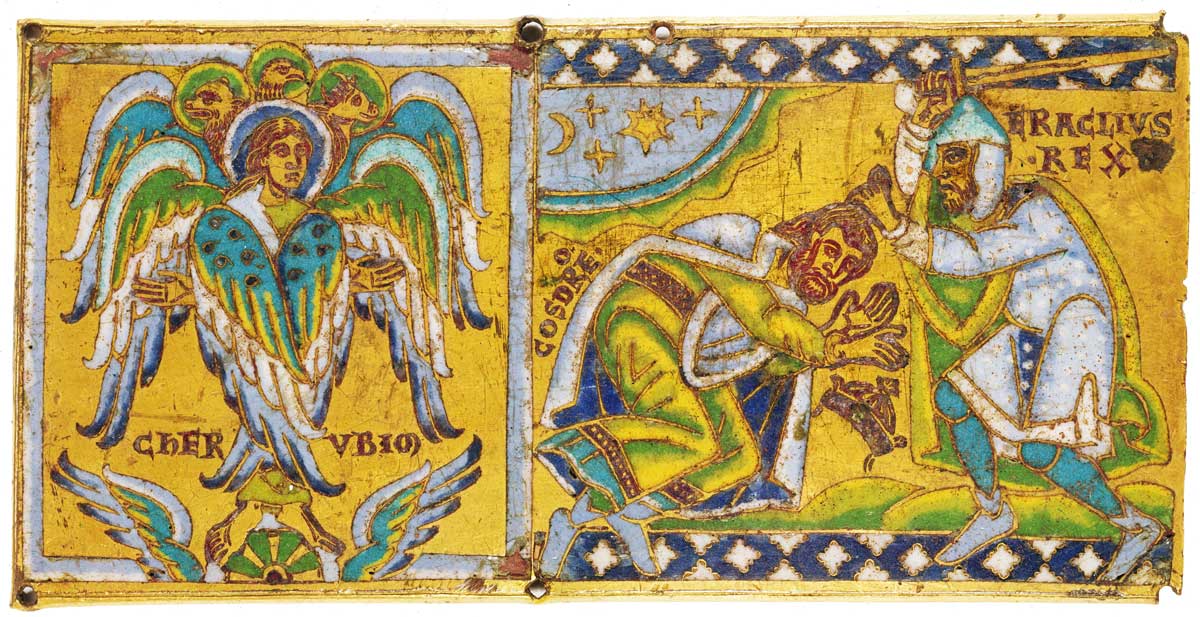
Neither did conversion. The conquered population, largely Aramaic- speaking Christians and Jews, saw no reason to adopt the religion of the newcomers, who probably had little idea of the difference between their own religion and that of the conquered. Both believed in one god, both prayed in much the same way and both subscribed to the same devotional stories, of Abraham, Joseph, Moses, David, Solomon, even Jesus.
As the administration matured, however, so did its ideology. The four Rashidun caliphs gave way to the Umayyad administration in 661, which, like all successful imperial systems, saw the need to adopt a clear ideology. Arabism, or Arab tribalism, was the most obvious choice and the Umayyads adopted it wholeheartedly. But there were also benefits in defining their religion. In the late antique world of universal religions, clarifying your beliefs and making them the official ideology of your nascent empire afforded an administration the ability to tax those populations that differed from it.
Access to power meant adopting Arabism and Islam. Among the second and third generations of the conquering Arabs, mounting a horse and conquering was less attractive than entering the administration to run what had been conquered by previous generations. The Sasanian elite adopted the new ideology and gained positions of authority by doing so. Many became early interpreters of the canonical beliefs of the new religion. They promoted the choice of ideology as the only marker of social membership and, alongside Arabic, Persian became accepted as the second language of Islam. Some of the children of the conquered elite became religious authorities of the new community, using Persian to convert the rest of the population. Moving alongside the conquering armies and as part of the expanding administration, they used their own version of Persian, an almost pidgin form of the language, instead of the literate Middle Persian of the Sasanian administration, to spread the new ideology. As in Syria, where speaking Arabic and adopting Islam opened doors, so in the former Sasanian territories, speaking Persian and adopting the new ideology became the means to power.
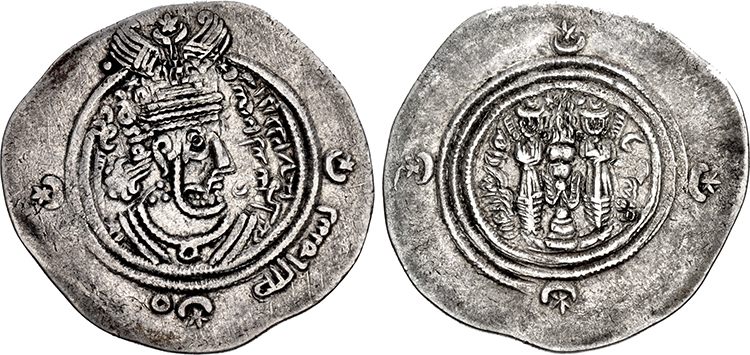
The local languages of Parthia, Bactria, Sogdiana and Khwarazmia were pushed aside, reduced to the spoken languages of the rural, non-Muslim population. Persian and Islam slowly took over as the urban elite converted to the new ideology and adopted the new language. The writing systems were sometimes retained for several generations to manage the local administration, hence the continued use of Middle Persian Pahlavi, Bactrian and Sogdian for local affairs. Arabic was used to keep the central administration in Damascus or Kufa informed, but, slowly, New Persian, initially trying its luck with the Pahlavi script or the Hebrew one, opted for Arabic script. It took two centuries for the majority of the population of the former Sasanian territories to become Muslim. It also took two or three centuries for New Persian to emerge as a written language, replacing Arabic as the administrative language of many of the former lands of the Sasanians. New Persian had become the dominant language of the east a long time before the poet Ferdowsi was born. Instead of representing a desperate attempt at saving the language of an oppressed group, Ferdowsi’s mature and heavy prose represented the triumphant success of a new class of literati and the peak of the new language.
The rise of Islam in the former Sasanian territories was a gradual process of economic, cultural and political change. Furthermore, by dismissing the idea of the end of the rule of the Sasanian dynasty as a national failure, we must understand the process by which the Sasanian administration, having become unsuitable for the administration of its territories, was removed and only gradually replaced by a new system, which, after many years, proved to be nothing but a modified version of the Sasanian court in most aspects. Only then could Late Antiquity finally give way to the world of medieval Islam.
Khodadad Rezakhani is Associate Research Scholar at the Sharmin and Bijan Mossavar- Rahmani Center for Iran and Persian Gulf Studies, Princeton University.





